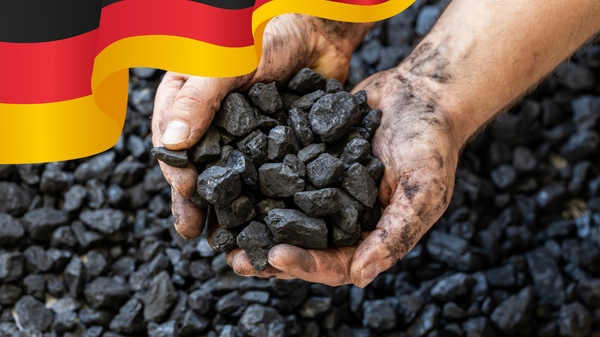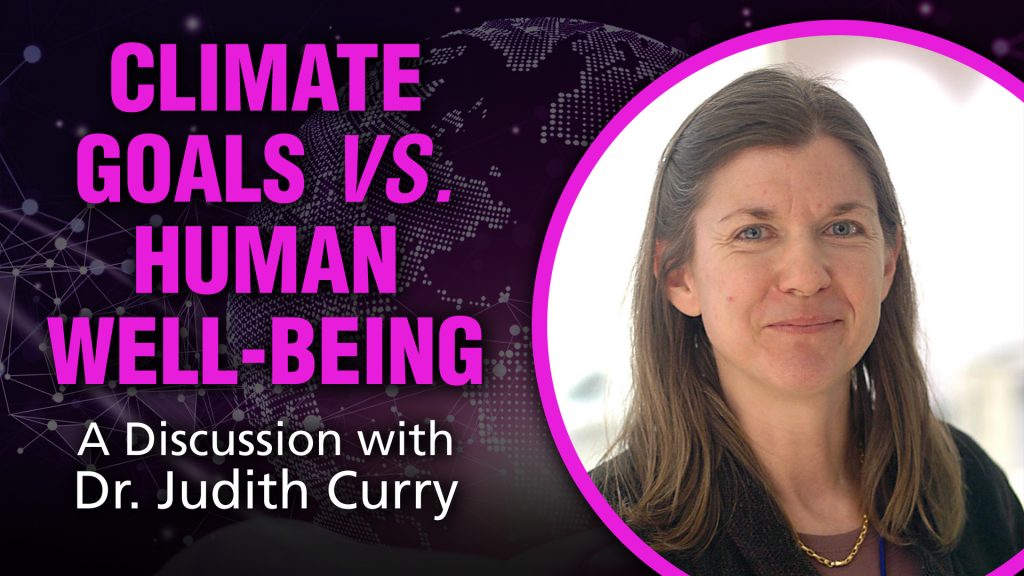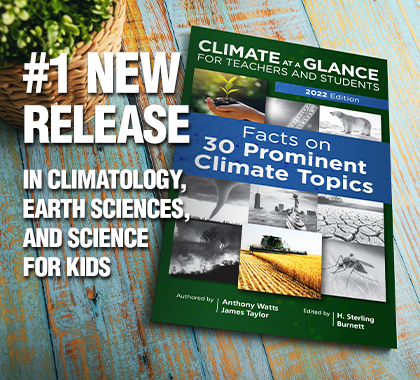YOU SHOULD SUBSCRIBE TO CLIMATE CHANGE WEEKLY.
IN THIS ISSUE:
- Jay Lehr, R.I.P.
- Bad Climate Assumptions, Worse Climate Predictions
- Podcast of the Week: Clean Energy Crisis: The Impossibility of Replacing Fossil Fuels (Guest: Donn Dears)
- Coal Makes Comeback in Germany and Elsewhere
- Walrus Recovery Refutes Climate Extinction Narrative
- Video of the Week: BANNED BY YOUTUBE: A discussion with Dr. Judith Curry
- BONUS Video of the Week: Biden’s Gas Stove Ban
- Climate Comedy
- Recommended Sites
Jay Lehr, R.I.P.

A giant of man and a brave scientist passed away suddenly on Tuesday.
Jay Lehr was the most-vigorous and interesting man any of us have ever met, and will probably ever meet. Irrefutable data is in the picture at left.
Next week’s Climate Change Weekly will be dedicated to the life and work of Jay, a peerless communicator, and a supremely generous friend.
By then, we trust that our our feelings of shock and mourning will give way to the boundless optimism and joy for life that defined Jay Lehr. Godspeed, Jay.
Bad Climate Assumptions, Worse Climate Predictions

“How do I love thee? Let me count the ways.” So begins Elizabeth Barret Browning’s famous Sonnet 43. What does that have to do with climate change, you ask? Browning’s poem has parallels to our understanding of the myriad physical mechanisms that drive climate change. “What affects the climate? Let me count the factors. …” Some people just don’t want to do that.
Recent research published in the International Journal of Climatology, a peer-reviewed scientific publication of the Royal Meteorological Society, suggests cycles of warming and cooling and associated climate phenomena are driven in large part by periodic solar and ocean oscillations. The well-funded researchers for the U.N. Intergovernmental Panel on Climate Change consistently underappreciate or ignore these factors in fashioning the climate models they use to represent the world.
Examining extended tree-ring data of the Scots pine of northern Finnish Lapland, stretching to the year 5,634 B.C, the researchers found multiple and sometimes overlapping natural cycles of various durations throughout the record, tracking temperature shifts on short, medium, and longer-term time scales. Among the most direct and profound drivers of temperature shifts on short time scales are large, powerful volcanic eruptions.
Other natural cycles that drive climate shifts of various durations, regionally and sometimes globally, are oceanic circulation patterns, including La Niña and El Niño cycles, and over longer time periods the Atlantic and Pacific multidecadal oscillations. Though these forcing mechanisms are not the focus of the paper, they are well-established in the literature. No Tricks Zone provides links to dozens, possibly hundreds of journal articles published over the past decade that suggest oceanic cycles do not just correspond to climate changes but have driven them in many instances.
The paper focuses instead on the role solar cycles of various lengths play in changing temperatures and climate. In the paper’s abstract the authors write,
The mechanism and even the existence of the Atlantic Multidecadal Oscillation (AMO) have remained under debate among climate researchers, and the same applies to general temperature oscillations of a 60–90-year period. The objective of this study is to show that these temperature oscillations are real and not artifacts and that these oscillations have different external cosmic origins. The authors have studied how well the variations of astronomical harmonic resonances (AHR) could explain the 60-year temperature variations, which are based on instrumental records. …
The similarities between the temperatures of the tree-ring trend and the AHR trend are easy to observe even by the naked eye. The statistical analysis shows that these two signals are statistically related. The analyses also show that the well-known Gleissberg cycle of 88 years is the dominating cycle caused by the Suns’ [sic] activity changes but the observed 60-year cycle can be connected to the AHR cyclicity.
The Finnish scholars are by no means the first to recognize that the Sun, the single greatest power source in our solar system, has a significant and perhaps dominant influence on climate shifts. Scholars such as Nir Shaviv, Willie Soon, the late Eigil Friis-Christensen, Sallie Baliunas, and Hans Svensmark, among many others, have spent large portions of their academic careers studying, analyzing, and describing the various ways solar activity drives periodic climate changes on Earth.
Also, rarely does the public hear anything about water vapor, which makes up 97 to 98 percent of atmospheric greenhouse gases or clouds, which, depending on the type, can have either a cooling or warming effect. This virtual media blackout happens even though hundreds of journal articles and even the IPCC attest clouds affect the climate.
Other known factors that drive major climate changes on long- and medium-term time scales are the changes in the Earth’s tilt and orbit and, over eons, continental drift. These and probably myriad other factors result in climate changes on local, regional, continental, and global scales over various time periods.
Despite all this evidence, you would not know anything other than human greenhouse gas emissions drives temperatures on the Earth and changes in the climate, if you heard only reports from the mainstream media or read the IPCC’s massive Assessment Reports. The causal mechanism behind climate change should be the strongest part of the IPCC’s reports, yet it is in fact the weakest. Although the IPCC downplays the prominent benefits humanity has been blessed with because of climate change over the past century or so, its descriptions of climate change’s impact on weather are largely sound, describing facts on the ground. The explanations for why these changes take place, however, are woefully inadequate because the IPCC has placed all its explanatory eggs in one basket: greenhouse gas concentrations resulting from human activities.
Interestingly, over the course of its six assessment reports the IPCC has produced multiple graphics describing a range of forcing factors, or physical mechanisms natural and anthropogenic, that influence climate. These factors have changed from report to report, with some factors being dropped from one report to the next, other factors being combined, and still others being added. Yet the only climate influences the IPCC claims to understand well, and the only mechanisms put into their climate models as forcing factors, are human greenhouse gas emissions. Natural forcing factors are either assumed to have minimal, poorly understood effects on temperatures and climate or, as with oceanic oscillations, treated as if they have no effect at all.
In contrast to natural factors that affect climate that are ignored or downplayed in the models, the models incorporate various sets of “feedback” mechanisms as temperature and climate change multipliers, enhancing the assumed warming and changes caused directly by additional CO2, methane, and other trace gases humans are adding to the atmosphere. These feedback forcings, and how they supposedly function, are based purely on speculation, assumptions built into the models, not observed behavior of the environmental mechanisms involved or data accumulated over time describing how these factors have acted in the past in response to environmental perturbations such as temperature changes.
This is emblematic of the topsy-turvy world of climate science. Scientists use climate models they know downplay or fail to account for myriad physical factors that are known to alter temperatures and climate, because they are little-understood or difficult to model, while they incorporate forcings from feedback mechanisms based purely on the assumptions of the modelers. Theory trumps fact in climate models. The outcome is assumed—carbon dioxide equals dangerous warming—with the data and assumptions forced to fit the predetermined conclusion.
This may account for why, after thirty years and six sets of assessment reports, the IPCC’s range of possible temperature outcomes has not improved and the temperature outcomes of the present iteration of models, CMIP6, are even worse than the previous generation of models at tracking actual temperature trends. Models have persistently projected warmer temperatures and steeper temperature trends than have been measured, with CMIP6 models producing hotter temperature projections than any before them. If the IPCC can’t account well for the factors that drive temperatures and climate change, and for some factors it doesn’t even try, it is no wonder the models’ projections consistently fail to match reality.
It’s like trying to build a functioning car without installing hoses or wiring. Yes, the engine, transmission, and tires are important, but so are many other systems. It ain’t going to work, and by and large climate models don’t. They produce elegant representations of a climate that does not exist anywhere but on the fictional Earth the models describe.
Climate scolds foolishly try to defend their models by saying when they run them without including human greenhouse gas emissions they don’t produce the warming the analysts expect. Well, that’s the problem, isn’t it? Their expectations are based on an incomplete understanding of the range and direction of effects of various forcing factors. Their models, focusing only on human greenhouse gases, may match their expectations of warming, but they don’t correspond to reality. What about that do the IPCC and the mainstream media not understand? In science, it is data and observation, not theory and models, that determine the state of knowledge.
To sum up: Are human greenhouse gas emissions affecting the climate? Almost certainly. How could they not do so to some degree? Are they the only factors that drive temperatures and climate change? Absolutely not. Do we know for certain that human greenhouse gases are solely or even primarily responsible for the recent changes in climate? We do not. Only those who trust the flawed models instead of hard evidence can truly believe we do. Is climate change having disastrous consequences, producing more extreme weather more frequently? The data say no.
When making energy and climate policy, these are the premises we should proceed upon. We need more knowledge, not rash actions based on flawed representations of the climate.
SOURCES: Climate Change Dispatch; International Journal of Climatology; No Tricks Zone
Podcast of the Week
In his book Clean Energy Crisis, Donn Dears explains why it is impossible for society to reach net zero carbon emissions. Dears explains why it would bad idea to attempt to go net zero if this was a realistic possibility. Fossil fuels are energy dense, having relatively little impact on the land and environment. Wind and solar require far more land, leaving a massive environmental “footprint.”
Not only are the so-called green energy replacements for fossil fuels not green, but they are expensive and unreliable. As wind and solar power is added to the grid, lives are placed at risks from outages while jobs are lost due to unreliable energy supplies.
Subscribe to the Environment & Climate News podcast on Apple Podcasts, iHeart, Spotify or wherever you get your podcasts. And be sure to leave a positive review!
Get your Copy at Amazon TODAY!
Coal Makes Comeback in Germany and Elsewhere

Germany is slowly but surely learning physics is no respecter of climate goals and virtue signaling. Germany opened its first floating liquefied natural gas import terminal in mid-December, expecting to receive natural gas from the United States and elsewhere to replace gas previously received through pipelines from Russia. The terminal was built at breakneck speed, completed in only 10 months, including the pipelines needed to connect it to land.
In addition, the German government announced it will extend the productive lives of three of its nuclear power plants, contrary to its previous commitments and opposition by the Green Party, a minority partner in the ruling coalition.
Perhaps most disconcerting of all to the Greens was Chancellor Olaf Scholz announcing Germany would reopen five lignite-coal power plants which had been previously shuttered to help meet the country’s climate commitments under the Paris agreement. Not only has the German government approved the repowering of lignite-burning power plants, with the full knowledge that lignite is the lowest-quality coal producing the least power per unit of air pollution produced, it is also dismantling the small Keyenberg wind project in the western part of the country, to expand a nearby coal mine to feed the reopened power plants. The mine’s expansion is also coming at the expense of a small village which is being leveled to allow access to the coal beneath it.
Interestingly, Germany was already failing to cut coal use. Data published by the German environmental think tank Agora Energiewende found Germany released 40 percent more carbon dioxide emissions in 2022 than it was supposed to under its Paris CO2 reduction goals for 2020.
Germany is not alone in its embrace of coal to keep the lights on. “Despite bold climate pledges from a plethora of major world powers, it seems that many are unable to break their addiction to coal, as consumption is set to hit an all-time high (once again),” writes the Washington Times. “This month, an International Energy Agency (IEA) report suggested that coal consumption is expected to hit an all-time high and remain stable between 2022 and 2025.”
The IEA reports coal use has increased despite a global decline in steel production. Increased demand in Europe, plus Asia’s strong demand for coal to fuel new electric power plants and industrial facilities, are responsible for coal’s record-setting year.
As an Indonesia-based miner told the Washington Times, “Overall [coal] demand is expected to remain strong due to the robust economic outlook of countries like China, Indonesia, and India.”
SOURCES: The Washington Times; Forbes; Oil Price; The Brussels Times
Walrus Recovery Refutes Climate Extinction Narrative

When an Atlantic walrus made a rare appearance on the coast of England on New Year’s Day, climate alarmists had a field day declaring the creature a refugee from climate change. If so, it is because a changing climate is improving conditions for Atlantic walruses, allowing their populations to grow and flourish.
That’s right: instead of showing the Eastern area of the north pole is becoming uninhabitable for walruses, the sighting of the walrus on England’s coast is more likely an indicator of a population grown so large that Atlantic walruses are being forced to expand their range.
Polar Bear Science points out the Atlantic walruses “have been busily rebuilding their once-decimated populations brought to near-extinction levels by human slaughter over 350 years. Legal protections against hunting enacted by Norway in 1952 have allowed the species to recover, albeit slowly.”
In 2017 the U.S. Fish and Wildlife Service determined the Pacific walrus is not being harmed by climate change and is not likely to be harmed in the foreseeable future, and on the Arctic east coast in Svalbard, Atlantic walrus numbers have been steadily rising even as summer sea ice has declined. The Svalbard population of Atlantic walruses increased by 109 percent between 2006 and 2018 while summer sea ice declined in the Barents Sea.
It seems net primary productivity for the region, which means more food for walruses, has increased largely because of the decline in sea ice coverage. At least for the present and foreseeable future, it seems climate change is benefitting walrus populations on both the Atlantic and Pacific Arctic coasts.
As Matt Ridley writes, this suggests “[t]he reason for the recent British ‘walrush’ is that walruses are doing well, not badly. There are many more of them.”
SOURCE: Polar Bear Science; Climate Change Dispatch
Heartland’s Must-read Climate Sites
BANNED BY YOUTUBE: A discussion with Dr. Judith Curry

The estimable Dr. Judith Curry joins The Heartland Institute’s Anthony Watts, H. Sterling Burnett, and Linnea Lueken to discuss “Climate Goals vs. Human Well-Being” on the next episode of Climate Change Roundtable.
This is the discussion YouTube prevented people from watching on Heartland’s channel, so check it out on Rumble.
Tune in LIVE every Friday at noon CT on YouTube to catch the show and participate with other fans in the chat.
Biden’s Gas Stove Ban
The Heartland Institute’s Donald Kendal, Jim Lakely, Justin Haskins, and Chris Talgo present episode 380 of the In The Tank Podcast. The Biden administration announced this week that it was considering a ban on gas stoves, supposedly because it causes asthma in kids – a claim not backed up by science. They are trying to walk back from this infuriating government overreach, but the In the Tank crew won’t let them because it’s part of a tyrannical pattern by our ruling elite.
The In the Tank Podcast is now broadcast LIVE every Thursday at Noon CT at Heartland’s Stopping Socialism TV channel. Go on over and subscribe so you won’t miss any upcoming episodes.






 via Comically Incorrect
via Comically Incorrect























[…] Link: https://heartlanddailynews.com/2023/01/climate-change-weekly-458-bad-climate-assumptions-worse-clima… […]
[…] Link: https://heartlanddailynews.com/2023/01/climate-change-weekly-458-bad-climate-assumptions-worse-clima… […]